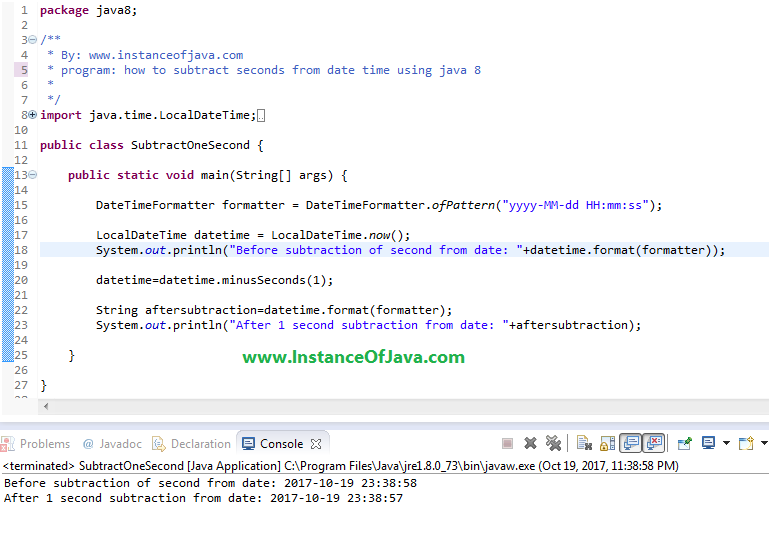

Output: The difference in seconds: 1041052966 Only the quotient is needed, and that’s why only the 0 index is used through the code.

The divmod() function accepts two numbers as the dividend and divisor and returns a tuple of the quotient and the remainder between them. In the case of all, it will return an output that gets the difference based on all the cases from years to seconds.
Datetime minus minutes code#
The first thing that the code does is to initialize 2 separate dates for subtraction and calling the function multiple times with different outputs each time. Print('The difference in years:', getDifference(then, now, 'yrs'))

Print('The difference in days:', getDifference(then, now, 'days')) Print('The difference in hours:', getDifference(then, now, 'hrs')) Print('The difference in minutes:', getDifference(then, now, 'mins')) Print('The difference in seconds:', getDifference(then, now, 'secs')) from datetime import datetimeĭef getDifference(then, now = datetime.now(), interval = "secs"):
Datetime minus minutes full#
Here’s the full source code for datetime subtraction using the datetime module and its functions. The datetime object has a built-in method datetime.total_seconds() converting the object into the total seconds it contains.ĭate & Time in Python (Printing and Calculating Date and Time) (Video 53) To convert this result into different formats, we would first have to convert the timedelta into seconds. The result means that the two dates are 12055 days and 5 hours and 10 minutes apart. Subtracting two datetime objects will return the difference of the number of days, and the difference in time, if there is any. It also accepts optional parameters in the form of hours, minutes, seconds, microseconds, and timezone.ĭatetime also has the function now(), which initializes the current date and time into the object. Initializing a datetime object takes three required parameters as datetime.datetime(year, month, day). Use the datetime Module to Subtract Datetime in Pythonĭatetime is a module in Python that will support functions that manipulate the datetime object. We will explore different outputs after subtraction, like outputting the number of seconds, minutes, hours, or years of the difference of the two datetime objects provided.
Datetime minus minutes how to#
This tutorial will introduce how to perform datetime subtraction in Python. Note that in order to make the operations moment.add(-.5, 'days') and moment.subtract(.5, 'days') equivalent, -.5, -1.5, -2.5, etc are rounded down.Created: December-03, 2020 | Updated: December-10, 2020 Weeks, quarters, and years are converted to days or months, and then rounded to the nearest integer. moment().subtract('seconds', 1) // Deprecated in 2.8.0Īs of 2.12.0 when decimal values are passed for days and months, they are rounded to the nearest integer. It has been deprecated in favor of moment#subtract(Number, String). moment().subtract(7, 'days') īefore version 2.8.0, the moment#subtract(String, Number) syntax was also supported. Note : if we doesn’t specify by default it takes. Syntax: class datetime.timedelta (days10, seconds40, microseconds10, milliseconds60, minutes10, hours4, weeks8) Returns : Date. timedelta is very easy and useful to implement. This is exactly the same as moment#add, only instead of adding time, it subtracts time. It is used to manipulate date, and we can perform an arithmetic operations on date like adding or subtract.

Mutates the original moment by subtracting time.


 0 kommentar(er)
0 kommentar(er)
